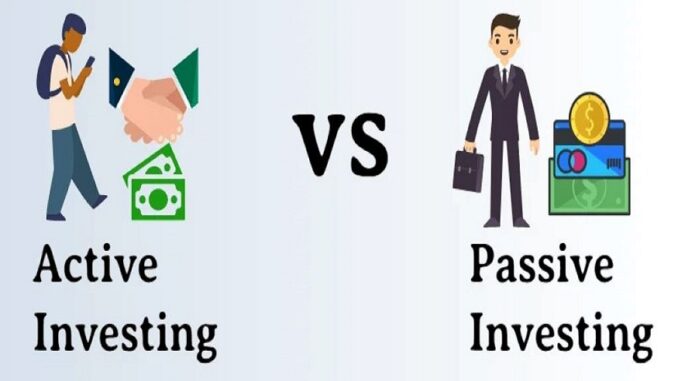
Investing in the stock market is a path many consider for building wealth and securing their financial future. But once you have decided to invest, there are further choices to make. One fundamental decision is whether you want to adopt an active or passive investing approach.
Both active and passive investing offer potential benefits and drawbacks. Understanding the difference is crucial for making informed investment decisions that suit your specific needs and risk tolerance.
What is active investing?
The expertise of professional fund managers is relied upon by active funds. In coming up with an appraisal that will be useful to the investor, the managers take time to study individual firms and areas as well as macroeconomic cycles. What they try to do is identify shares that have an attractive value and whose performance will most likely be better than others. They also aim to benefit from market’s movements to provide risk-adjusted returns to the investor.
In less efficient markets or those with specialisation, active funds may provide benefits where exhaustive investigation can uncover opportunities unseen before. Active funds may also be more successful during times when there is extreme price fluctuation in the stock exchange and skilled managers can take advantage of this.
What is passive investing?
Passive investing, on the other hand, is designed to track the performance of a particular market index. Rather than trying to “beat the market”, passive funds aim to mirror the returns of a chosen index.
A passive fundwill hold stocks in the same proportion as the index it tracks. For example, a Nifty 50 index fund will hold the same 50 stocks represented in the Nifty 50 in the same proportions.
Pros and cons of active and passive investment
Active investing
Pros: Potential for outperforming the market in skilled hands.
Cons: Higher fees, potential for underperformance, higher risk.
Passive investing
Pros: Lower costs, predictable returns, diversification.
Cons: Limited potential to beat the market, can’t avoid losses during downturns.
Active funds vs. passive funds: A comparison
Let’s break down the key differences between active and passive mutual funds in a simple table format:
| Feature | Active funds | Passive funds |
| Investment goal | Aims to outperform the benchmark index | Aims to mimic the performance of the benchmark index |
| Approach | Active stock selection, market timing | Index mirroring |
| Fund manager role | Highly involved in stock selection and trading decisions | Minimal involvement |
| Costs | Typically higher due to research and trading expenses | Lower expense ratios |
| Risk | Can be riskier due to concentrated bets on specific stocks | Less risky as investments are diversified across the index |
| Returns | Potential for higher returns | Closely match the returns of the underlying index |
Should you choose active vs passive investing?
The best choice for you boils down to three factors:
- Risk tolerance: Actively managed funds involve a potentially higher risk in pursuing higher returns. Active funds might be worth exploring if you are comfortable with some volatility. Passive funds offer more stability with returns linked to the broader market.
- Investment goals: If your main aim is to build wealth over the long term in line with market performance, passive funds could be a good option. If you have specific goals and seek the potential to exceed market averages, active funds could be considered.
- Costs: Active funds typically have higher expense ratios than passive funds due to the active management involved. These costs eat into your returns over time.
There is no single answer that can suit all when comparing both mutual funds. The strategy which you may consider best will depend on your personal situation. You should reflect upon things like how much risk you can bear, the time frame of the investment, and how much of a role you want to play in managing your portfolio actively.

Leave a Reply
You must be logged in to post a comment.